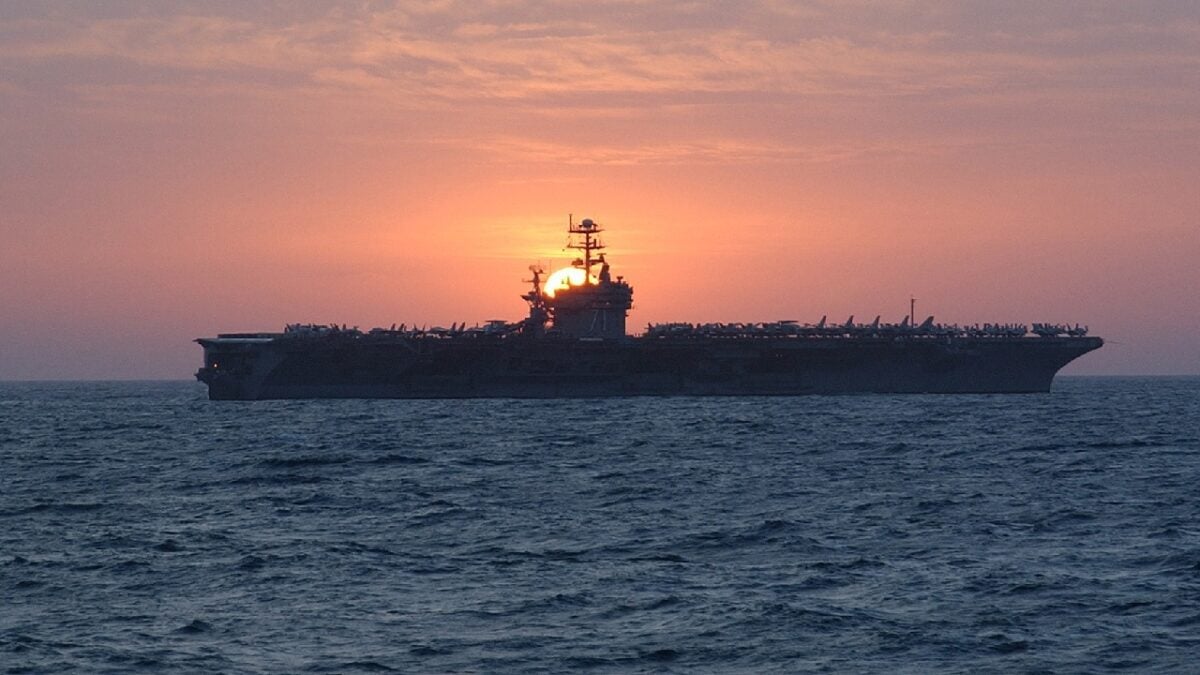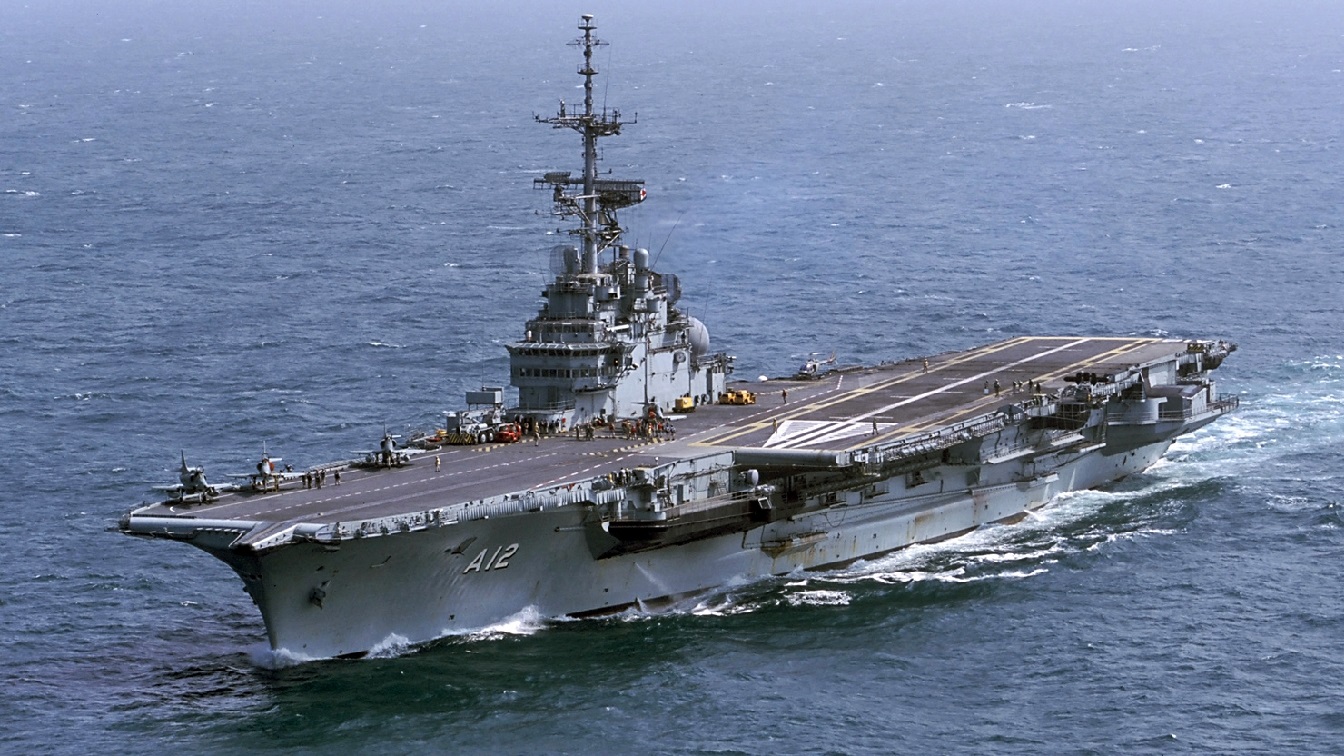Military Expert Peter Suciu gave us a detailed, exclusive analysis of why an old aircraft carrier is making a quite strange voyage with many risks involved: Retired warships haven’t always been disposed of in the most environmentally friendly of methods. The United States actually used a number of retired vessels – including the USS Nevada (BB-36) – in an atomic bomb test, while many old ships have simply been beached and dismantled with blow torches! However, the Hong Kong International Convention for the Safe and Environmentally Sound Recycling of Ships (The Hong Kong Convention) was passed in 2009 to address such issues.
It has called for ships that are recycled after reaching the end of their operational lives does not pose any unnecessary risk to human health and safety or to the environment.
Retiring such warships is a costly business.
That is why the United States Navy will spend $1.5 billion over the course of the next 15 years to ensure that the USS Enterprise (CVN-65), the first nuclear-powered carrier, is properly recycled. By contrast, the U.S. Navy sold its last two non-nuclear carriers – USS Kitty Hawk (CV-63) and USS John F. Kennedy (CV-67) – for one cent each to the Texas-based International Shipbreaking Limited. It will still take years for those warships to be carefully scrapped.

020306-N-6492H-510
At sea aboard USS John F. Kennedy (CV 67) Mar. 6, 2002 — The sun rises behind USS Theodore Roosevelt (CVN 71), as it prepares to turn over operations to the John F. Kennedy Battle Group. The Kennedy and her embarked Carrier Air Wing (CVW) are relieving the Roosevelt to conduct missions in support of Operation Enduring Freedom. U.S. Navy photo by PhotographerÕs Mate 1st Class Jim Hampshire. (RELEASED)
Toxic Aircraft Carrier Under Tow
Currently, there is some outrage as the former Brazilian Navy’s former flagship aircraft carrier, NAe São Paulo, is being towed across the Atlantic Ocean towards Turkey – reportedly in defiance of international and even Brazilian laws. The vessel, which began her service life as the French Navy’s Clemenceau-class aircraft carrier Foch, had departed Brazil on August 4, towed by the Dutch vessel Alp Centre for a 6,000-mile journey to Aliaga, Turkey, where the flattop will be cut up.
The transport of the ship is now in defiance of a Brazil Federal District Court injunction and, according to multiple activist groups, it has been exported in violation of the Basel Convention on the Control of Transboundary Movements of Hazardous Wastes and Their Disposal, as well as the Barcelona Convention for the Protection of the Marine Environment and the Coastal Region of the Mediterranean.
Even more notable is that several Turkish communities have expressed concerns over the impending arrival and scrapping of the vessel, which they claim will be an unacceptable toxic threat.
“Safe recycling or repurposing is, of course, the right thing to do with old ships. But dismantling old ships, laden as they are with toxic paints, asbestos, and cancer-causing chemicals, is one of the world’s most dangerous occupations. It must only be done in strict compliance with international and national laws and norms. The preparation and plan for this ship already fails that test,” said Jim Puckett, director of the Basel Action Network (BAN), which works to combat the export of toxic waste from technology and other products.
Aircraft Carrier Failure
Brazil acquired the ship in 2000, and it was refitted and recommissioned as the São Paulo, replacing the former British-made Colossus-class carrier operated by Brazil as the Minas Gerais. Though São Paulo had increased the capability of the Brazilian Navy, it had a remarkably bad service record and during 16 years in service never managed more than three months of operations between maintenance periods. Brazil also struggled to deploy the ship due to funding problems, and it was mainly used for pilot training in port.
The ship suffered two fires, and while there were calls to modernize the ship, which could have allowed it to serve until the late 2030s, instead, it was decided to retire and sell the vessel instead. In 2017, the Brazilian Navy decided that further investment in repair would be uneconomical, and it formally decommissioned her in 2018.
Efforts to save the ship – either as a museum or as a training vessel for the Turkish Navy – last year failed. The latter plan was scuttled as the bilateral agreement between Paris and Brasília stipulated that Brazil would be the “final user.”
Toxic Voyage
As the attempts to save the ship ended in failure, the retired flattop is now making her final voyage. However, it is not without serious controversy. According to the towing plan filed by the Instituto Brasileiro do Meio Ambiente e dos Recursos Naturais Renováveis (IBAMA), the transboundary movement of the carrier from Brazil to Turkey will pass through the Strait of Gibraltar and thus will move through the territorial waters of Spain, the UK, and/or Morocco. Under the Basel Convention, all transit states must be notified and give their consent before the export can commence.
It is now being debated whether those nations have been informed, and IBAMA had apparently stated that it believed prior notification to transit states was not needed if the ship did not stop in a port. Critics contend that is a weak excuse as this isn’t the first time IBAMA, the Brazilian Ministry of the Environment’s administrative arm, has had to move a warship.
The biggest concern is that it is a toxic waste hazard. According to the NGO Aliaga Environment Platform, the 60-year-old ship has a substantial quantity of asbestos on board, possibly as much as 600 tonnes.
In fact, Turkey’s Association of Asbestos Dismantling Experts (ASUD) found that her sister ship Clemenceau had contained more than 700 tonnes of asbestos when she was sent for scrapping in India. Clemenceau’s nearly decade-long saga was an extended and controversial affair, as multiple nations refused to accept her for scrapping. After years of negotiations, when the ship left France in late 2005, there were fierce protests about improper disposal and a lack of facilities for the management of toxic waste on the beaches of Alang, India where the work was to be completed.
The carrier was subsequently boarded by activists, held by Egyptian authorities, and was finally blocked from entering Indian waters by the Supreme Court of India. The warship was subsequently ordered to return to France by French President Jacques Chirac. It ended up finally being dismantled in a specialist yard owned by Able UK near Hartlepool, the UK in 2009 and work was completed a year later.
It is possible that São Paulo’s story has much more to come.
Expert Biography: A Senior Editor for 1945, Peter Suciu is a Michigan-based writer who has contributed to more than four dozen magazines, newspapers, and websites with over 3,000 published pieces over a twenty-year career in journalism. He regularly writes about military hardware, firearms history, cybersecurity, and international affairs. Peter is also a Contributing Writer for Forbes. You can follow him on Twitter: @PeterSuciu.

